English
The Mota Castle, located in the Vallisoletan city of Medina del Campo, is one of the largest castles in Castile with the peculiarity of being built of brick despite its age dating back to the thirteenth century with different remodelling throughout the Middle Ages, including the reign of the Catholic kings.

On many occasions, I had seen this spectacular castle from afar from the freeway, and no wonder, as it has a great keep some 40 meters high.
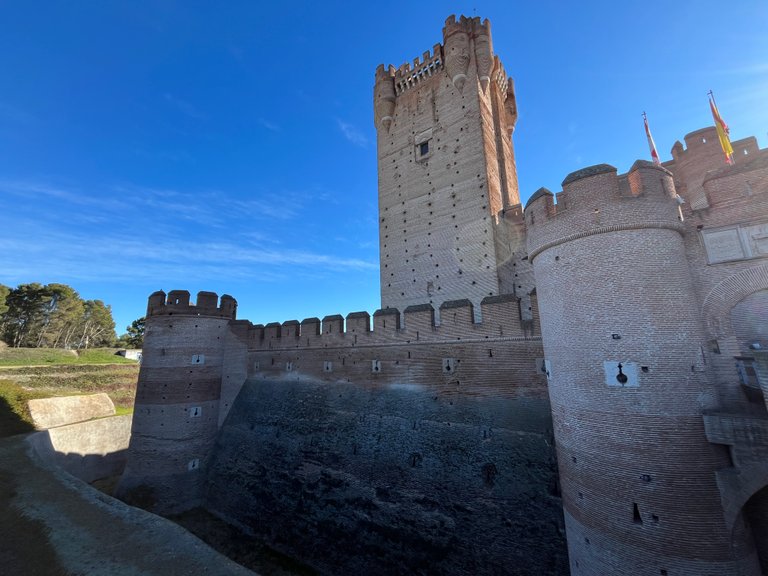
Last January, on one of my many trips, I decided that it was time to take a break and visit this castle, as the weather was sunny but cold and the castle was worth a visit.
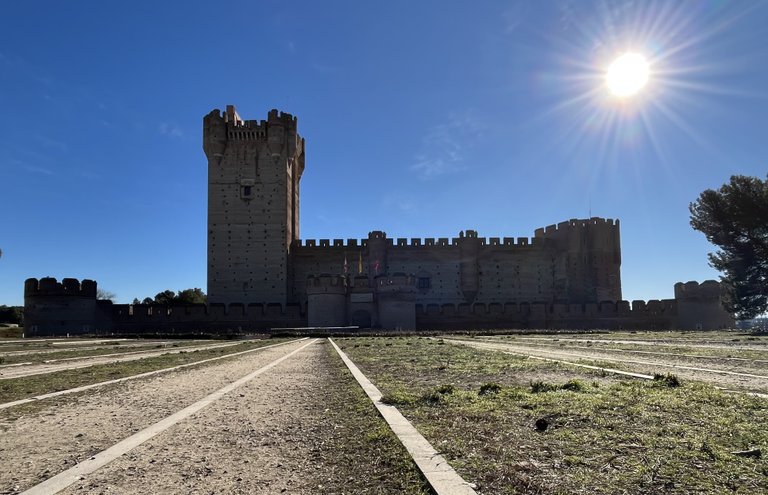
The visit to this castle can be done in three ways. The most common is with a guide, as this gives you access to almost the entire castle (5 euros). I say almost, because there is an extra fee if you want to go up to the keep (9 euros).

But, if you go in the month of January as I did, on Mondays you can only have a partial visit, but it is free. Unfortunately, this was my case.

Resigned to not being able to have a guided tour of the castle, I decided to enter the castle through the main entrance, which, like all medieval castles, has a large defensive moat and its own particular bridge.
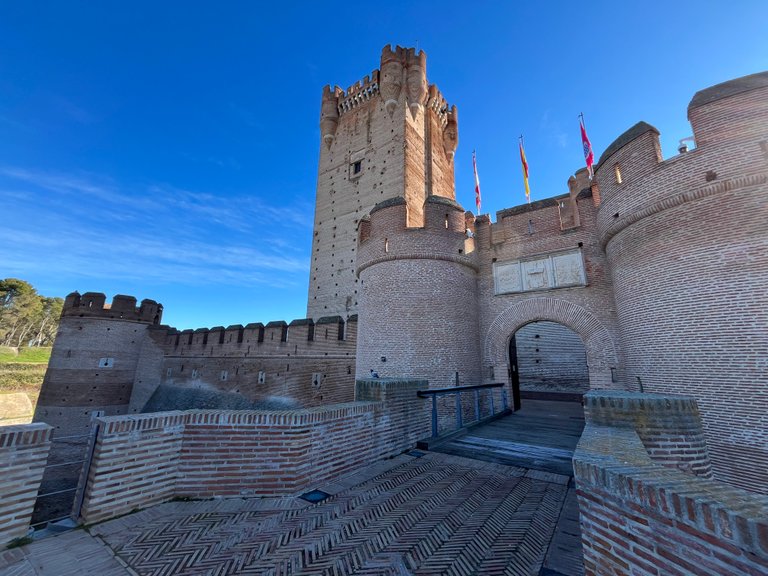
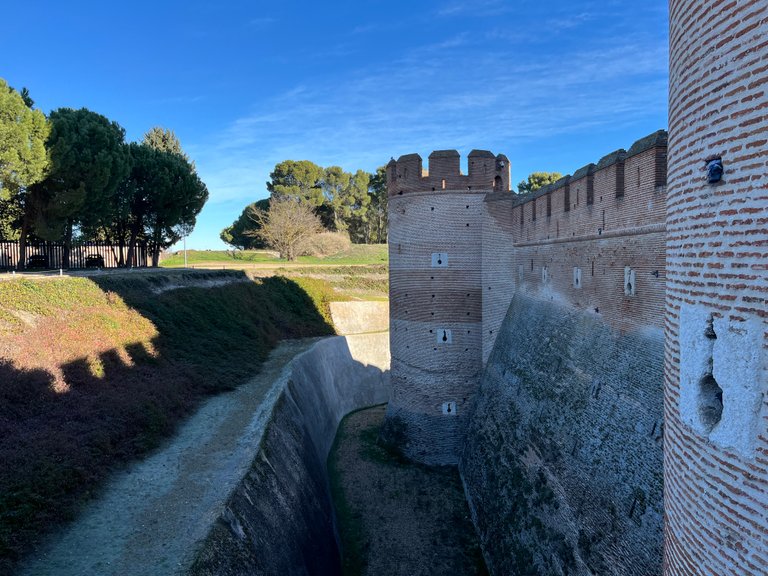
Before entering the fortress, two things caught my attention. The first was the heraldic coats of arms at the entrance, together with the flags of Spain, Castilla y León and the town of Medina del Campo. According to what I was able to document, the coats of arms and arms date from 1493.
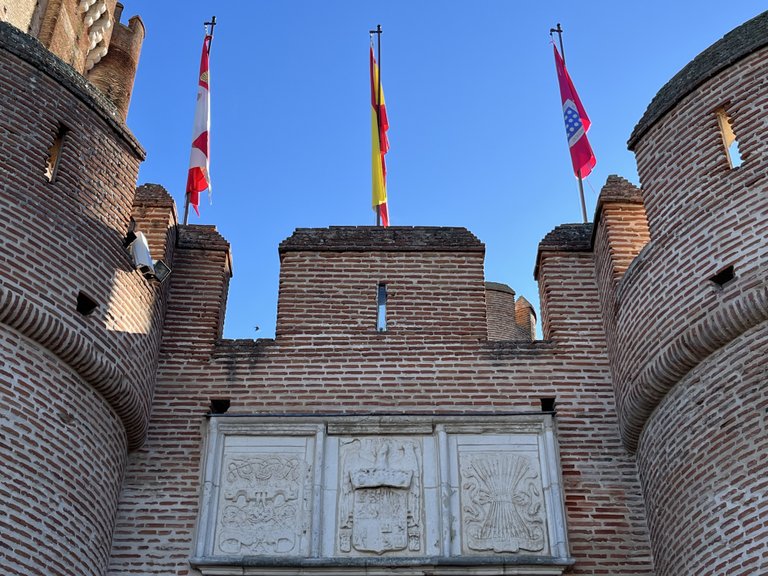
But the most striking feature is the keep, not because of its imposing height, but because of the impacts on its walls of different projectiles that hit the castle over the centuries. The fact is that this area was a very conflictive zone during the Middle Ages and in later centuries.
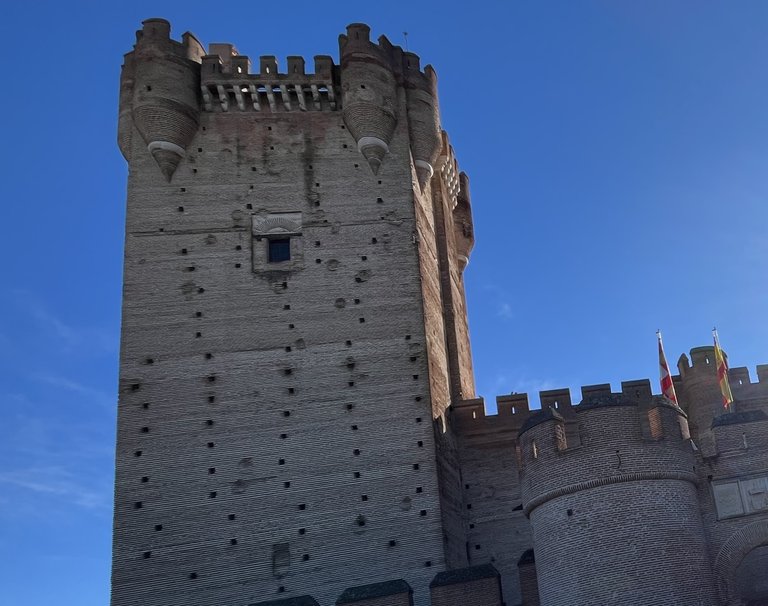
Once inside the castle I was able to tour the interior of the castle and take a closer look at the great keep.
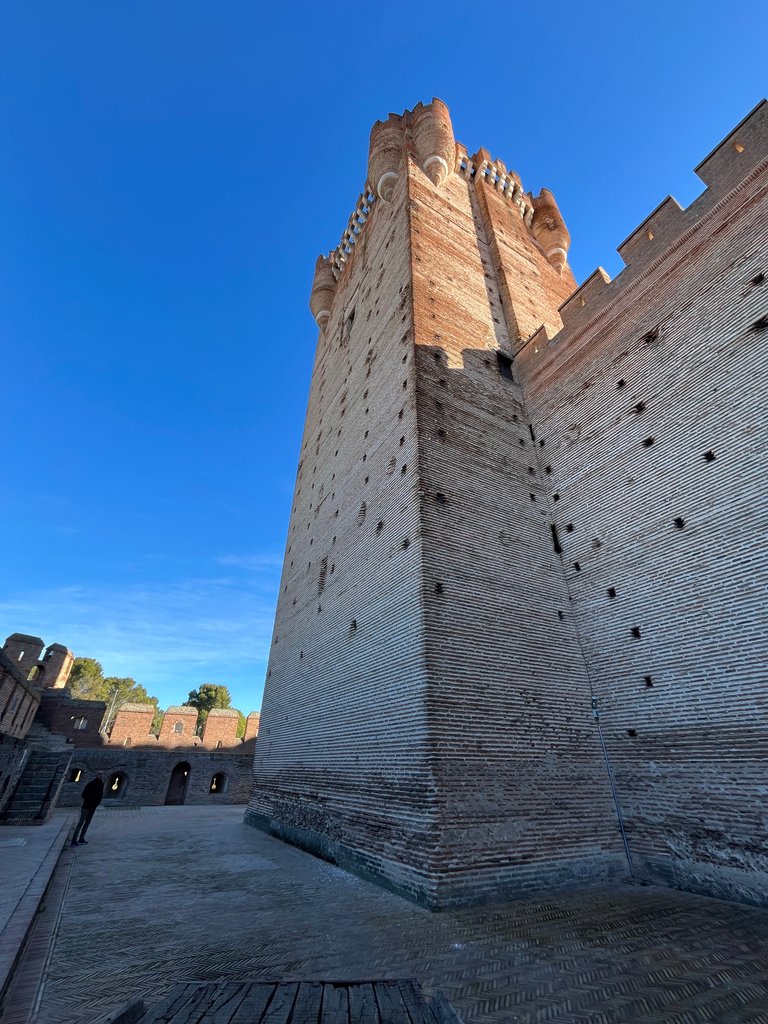
I was amazed to be able to walk through the first defensive area of the castle, very well cared for as if the centuries had not passed through its reddish bricks.
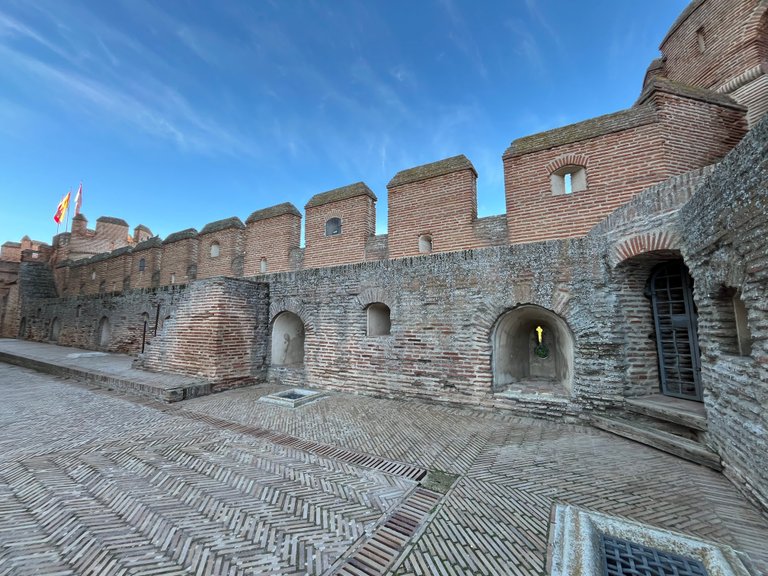
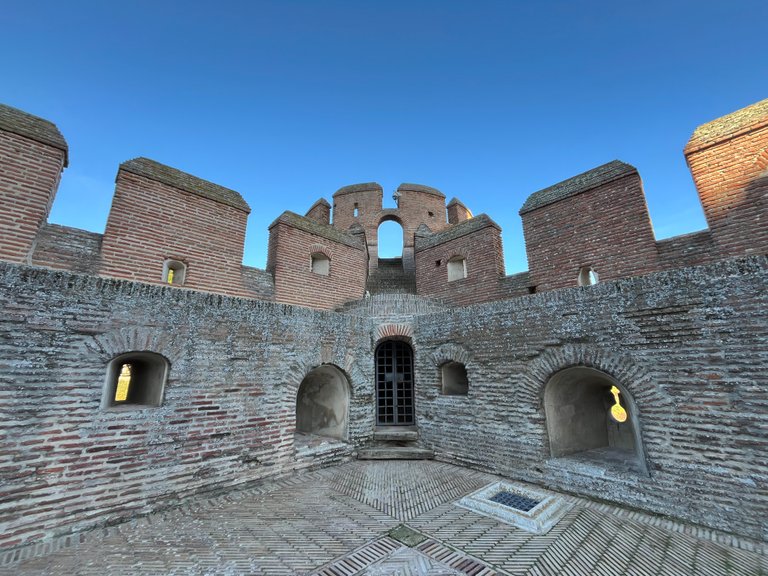
I was able to see the areas reserved for taking out the carabiners loaded with artillery to defend the castle from invaders.
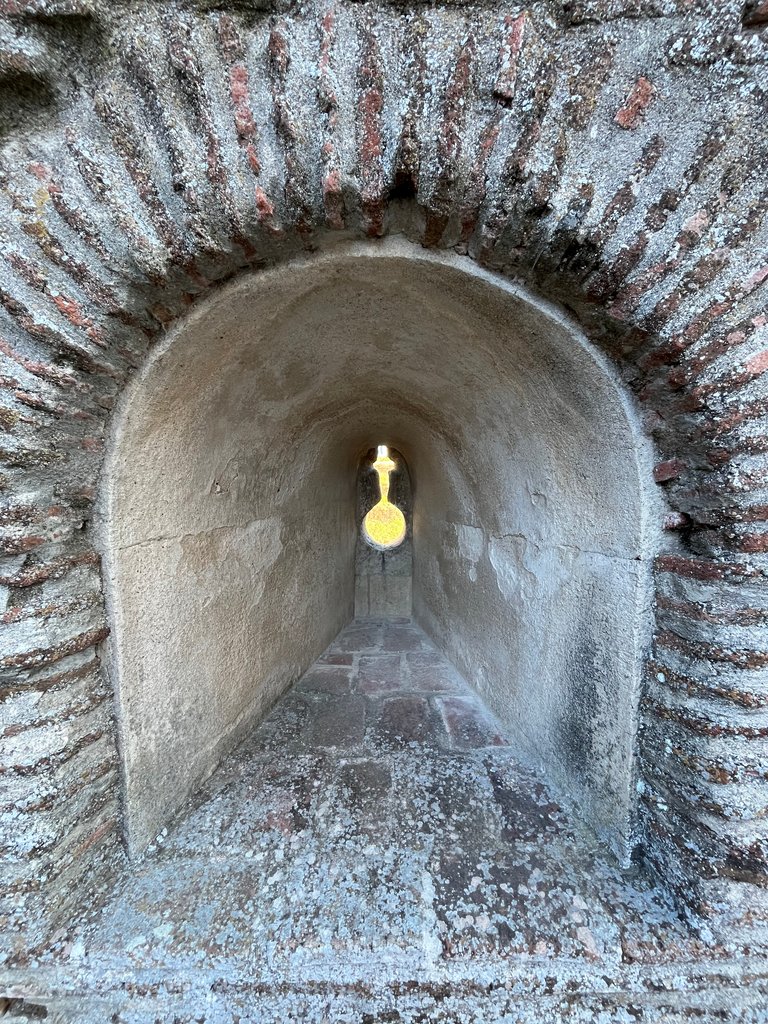
Even in one area of the castle I came across large stones, supposedly stones to be launched with catapults or stones that had impacted at some point on the keep. If stones could speak...
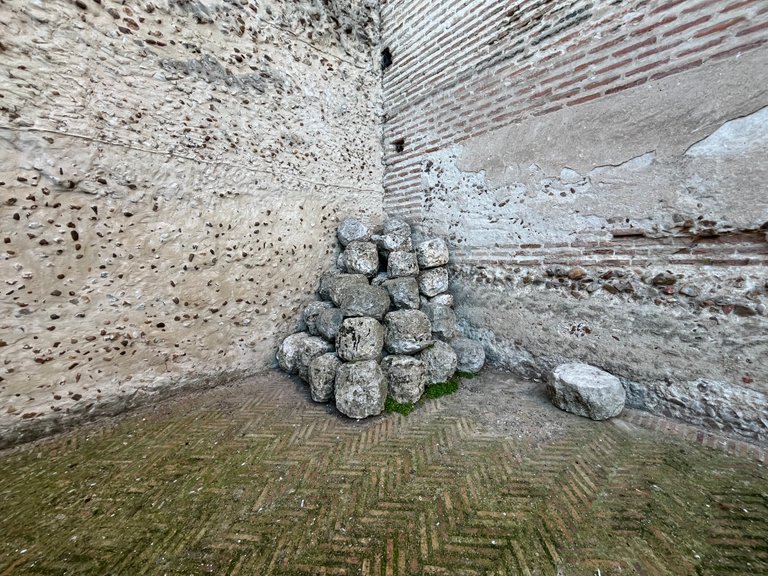
After touring the defensive area of the castle, I entered an inner courtyard of the castle, specifically its parade ground, from where you can take a nice picture of the keep and the upper part of the courtyard.
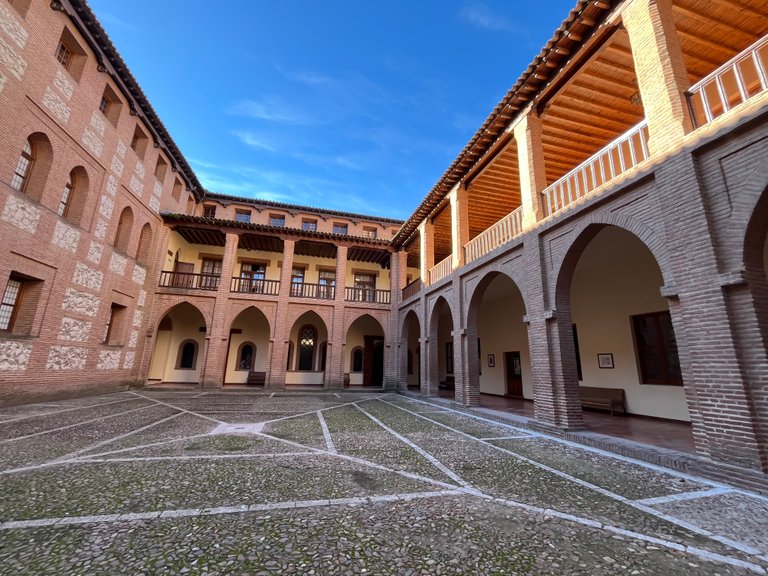
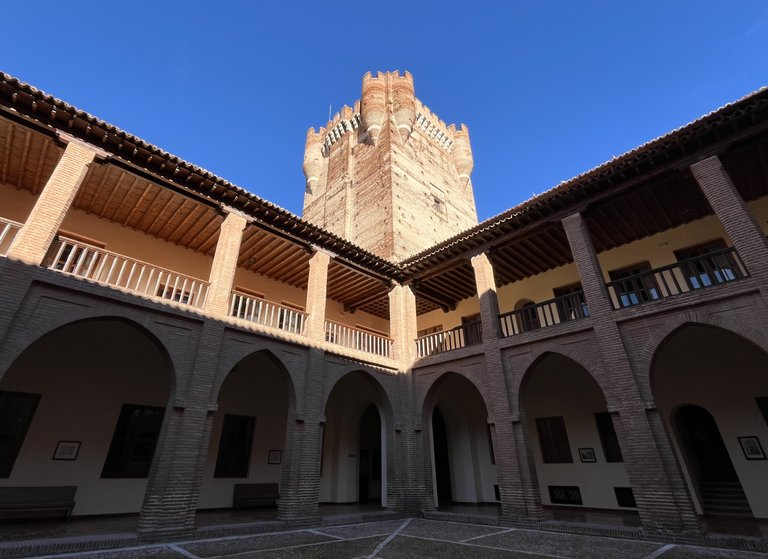
My entry to #pobphotocontest organized by @friendlymoose
In this courtyard, we can find old photographs of the castle and information about Isabella I (The Catholic).
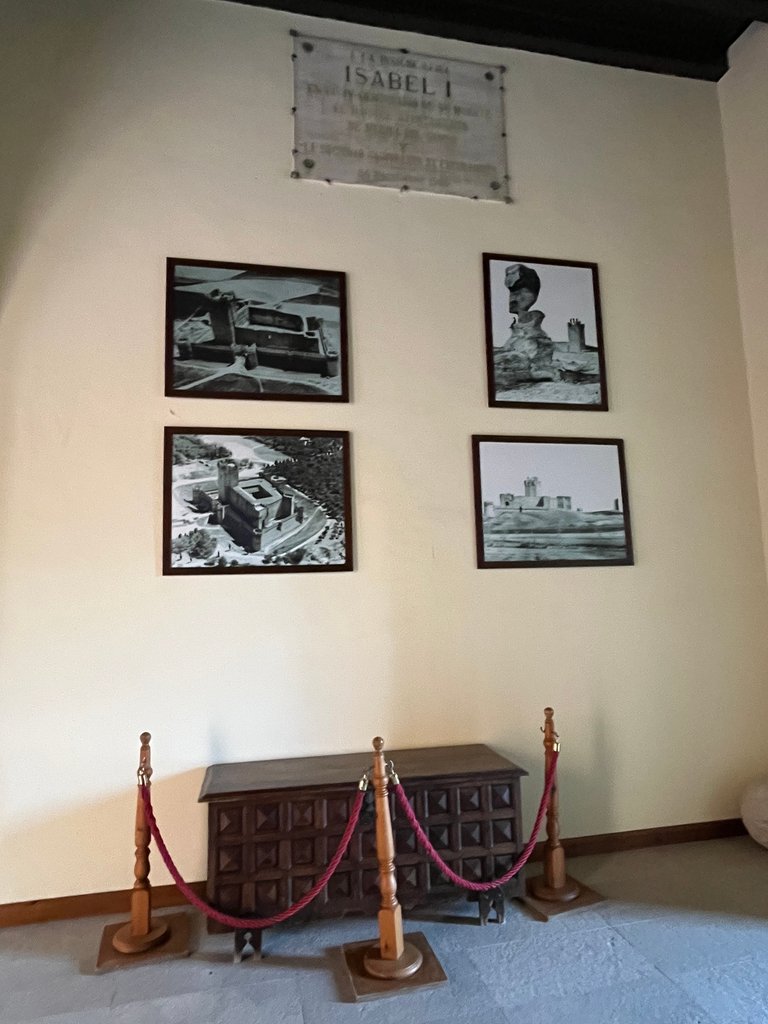
And from this courtyard we have the possibility of accessing an illustrative room where a large world map illustrating the known world as it was known after the first voyages of Columbus stands out. The cartography of the American continent is striking, although only of the part they had come to know.
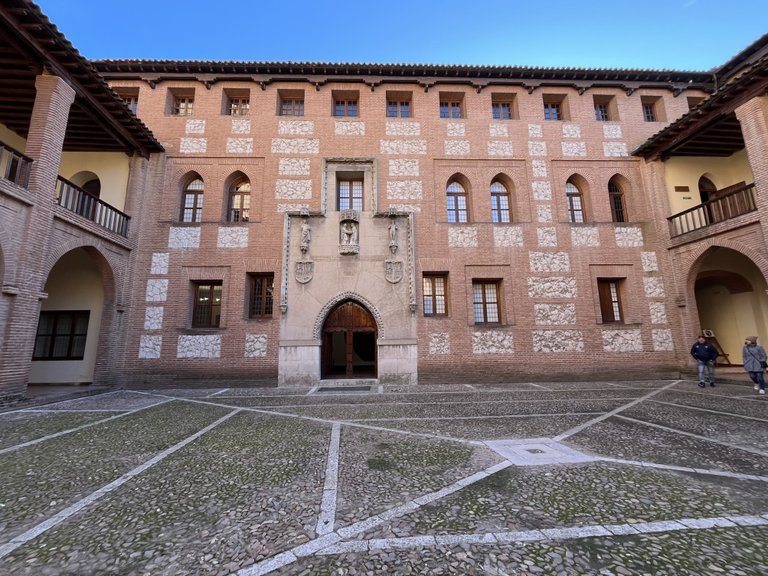


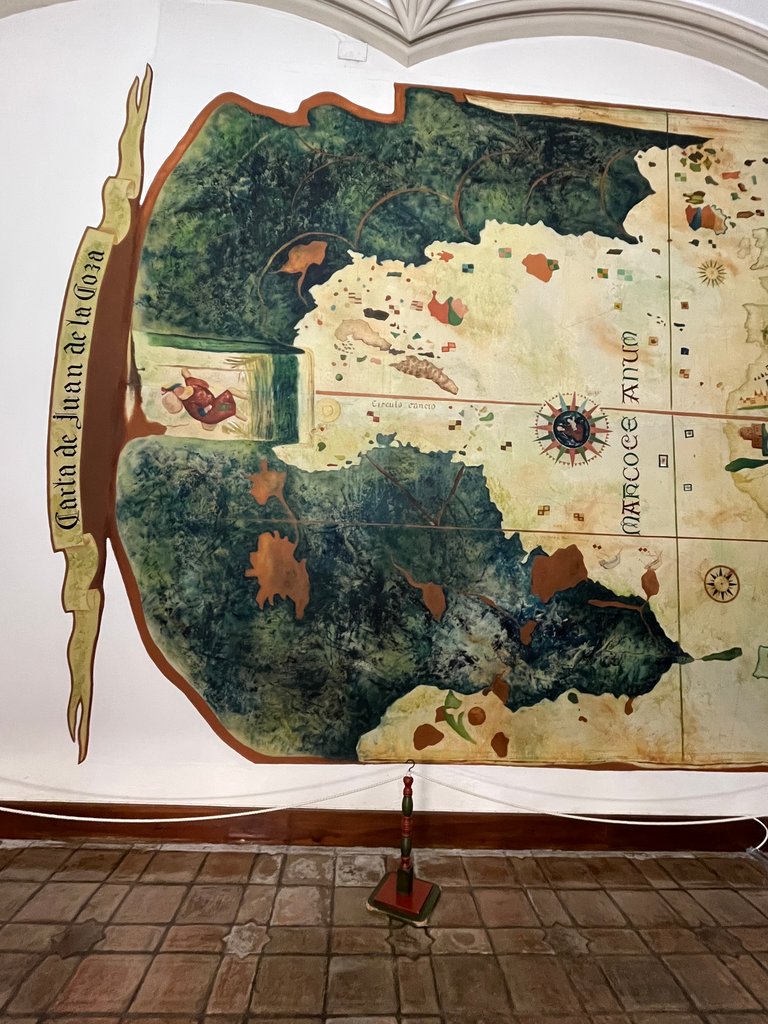
In this room, apart from this large world map, other didactic information stands out, such as the existence of other castles in the autonomous community of Castilla y León.
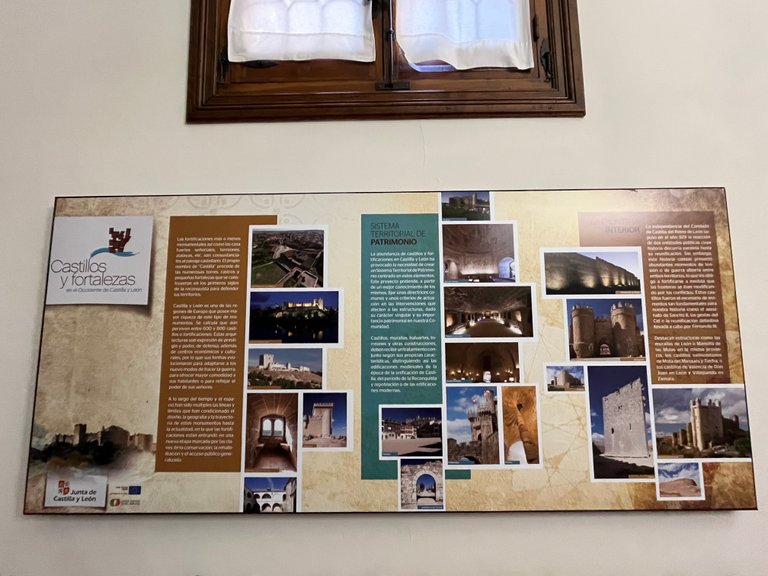

Another of the rooms that can be accessed freely from the parade ground is the chapel of Santa María del Castilla.

Built of brick, as it could not be any other way than brick.
With a sober golden altar.
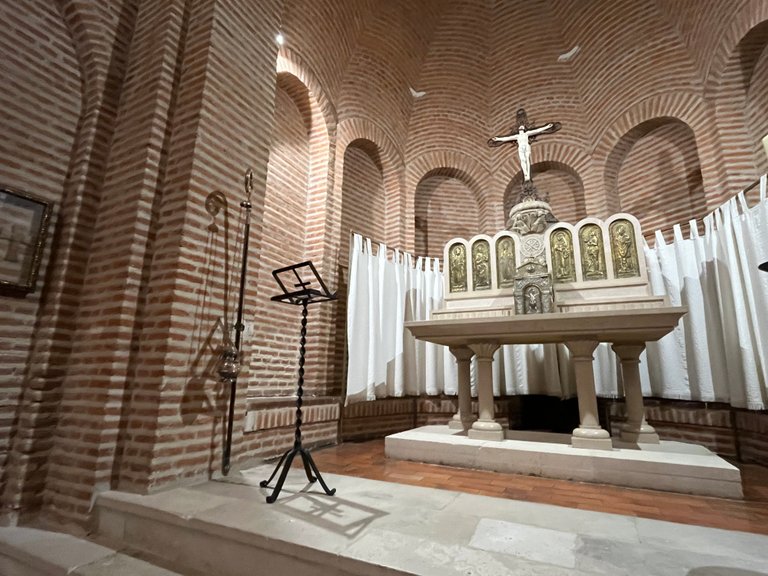
And in which I did some shadow hunting, taking advantage of the lectern and the natural light coming in through one of the chapel's side windows.
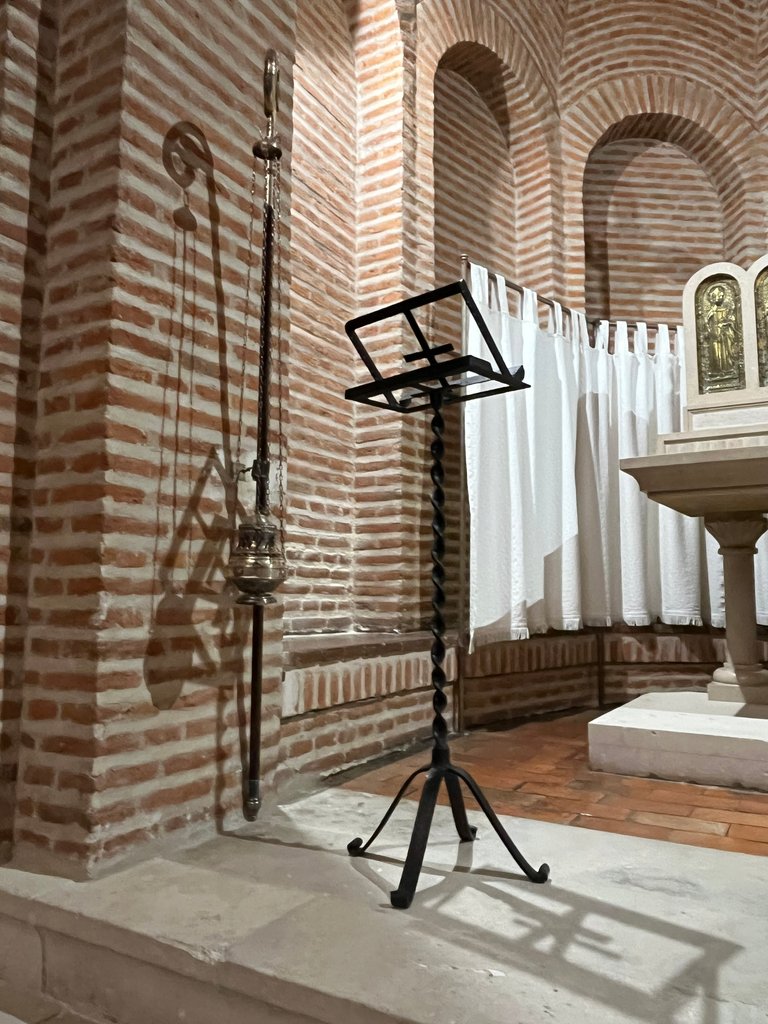
After the interior visit, I walked around the outside perimeter of the castle, marvelling at its imposing moats and sturdy towers and ramparts.
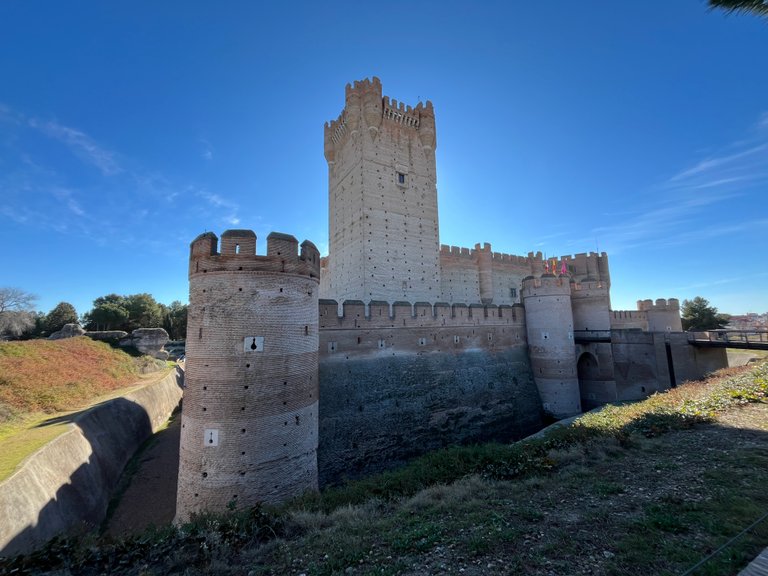
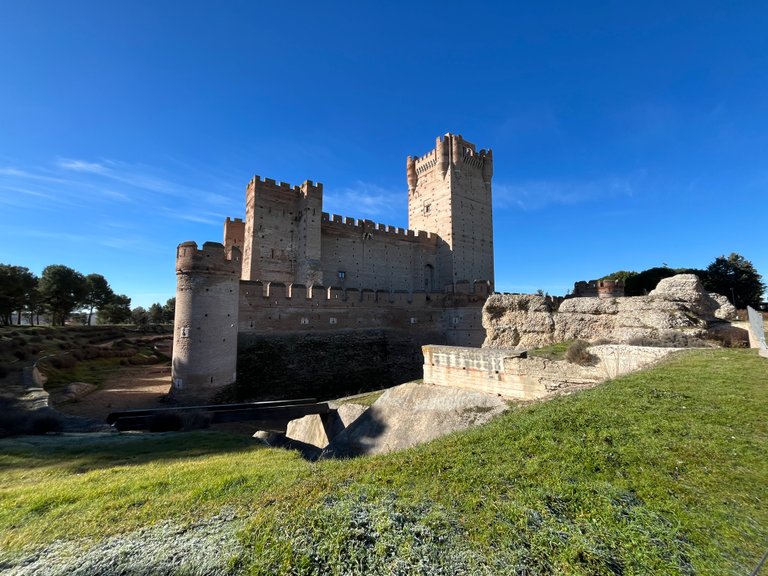
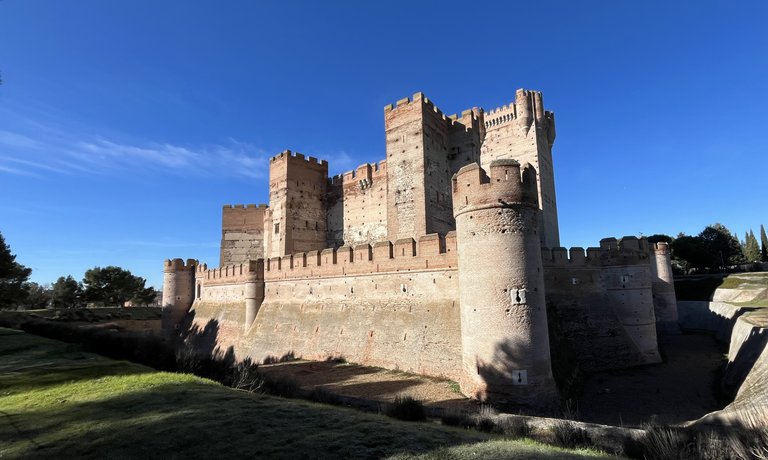
At the back of the castle there is a small pine forest, where the shade protected me from the sun.
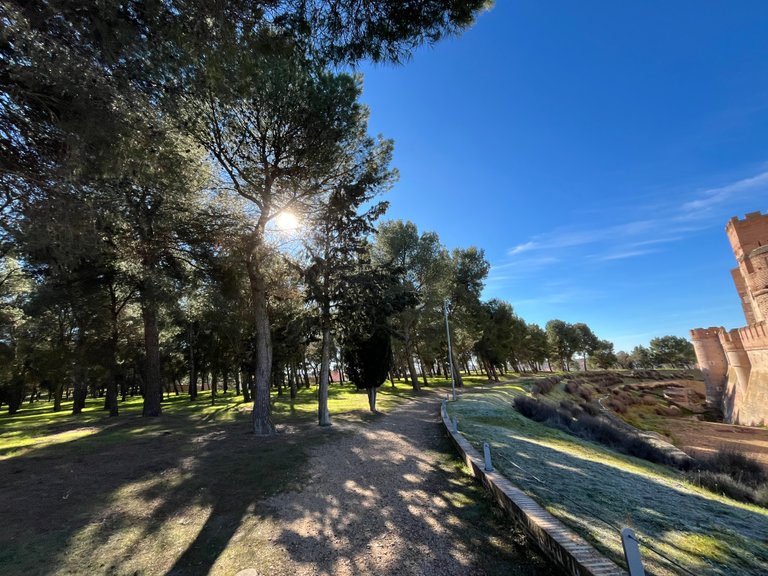
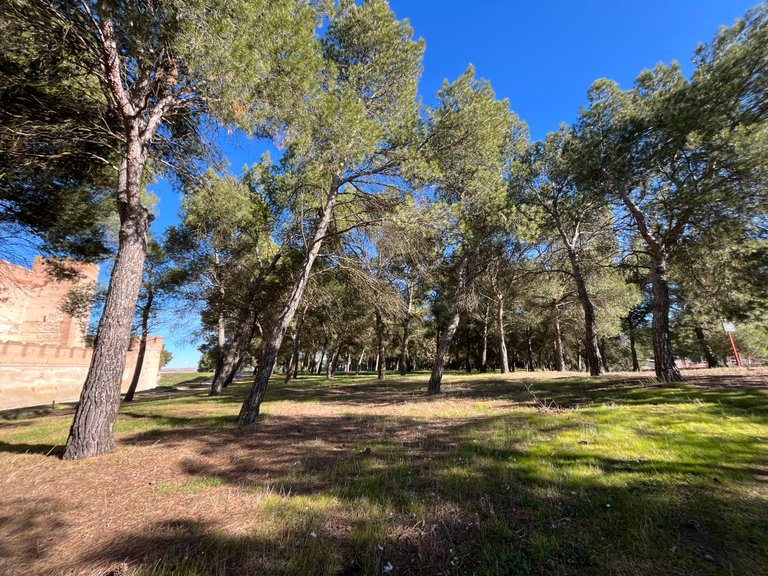
It is a privileged place to spend a few minutes contemplating this great castle which was once the home of the Catholic Monarchs and at the same time a great historical luxury prison for their daughter Juana ‘la loca’, as I was able to document in the museum of the Catholic Monarchs in Medina del Campo. But this is something I will tell you about in future posts.
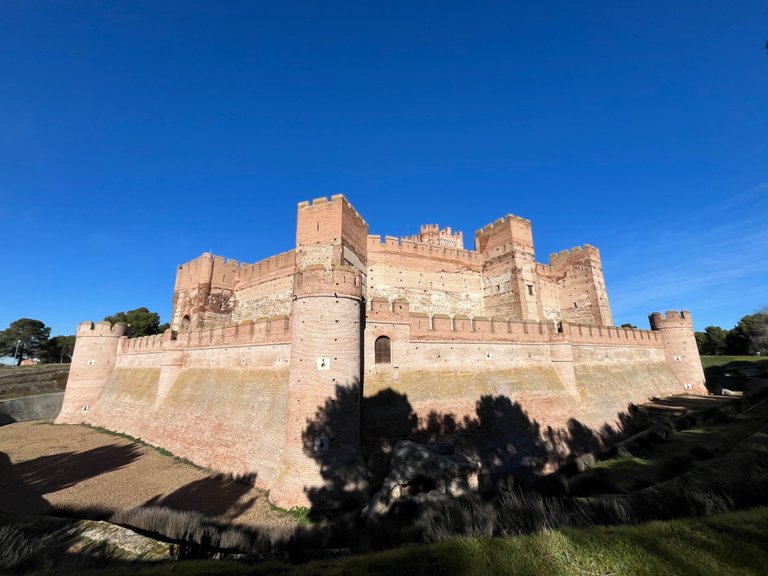
Best regards.
Español
El Castillo de la Mota, localizado en la Vallisoletana ciudad de Medina del Campo es uno de los castillos más grandes de Castilla con la peculiaridad de estar construido a base de ladrillo pese a tener una antigüedad que remonta al siglo XIII con diferentes remodelaciones a lo largo de la edad media incluida la época del reinado de los reyes católicos.

En multitud de ocasiones, había visto a lo lejos este espectacular castillo desde la autovía y no es para menos, ya que presenta una gran torre del homenaje de unos 40 metros de altura.

El pasado mes de enero, en uno de mis múltiples viajes, decidí que era el memento de hacer un alto en el camino y visitar este castillo, ya que el tiempo, soleado, pero frío animaba visitar el castillo.

La visita a este castillo se puede hacer en tres modalidades. La más común es con un guia, ya que con ello tendrás acceso a casi la totalidad del castillo (5 euros). Digo casi, porque hay una tarifa extra si quieres subir a la torre del homenaje (9 euros).

Pero, si vas en el mes de enero como fui yo, los lunes solo podrás una visita parcial, pero esta es gratuita. Por desgracia este fue mi caso.

Resignado, por no poder tener una visita guiada al castillo, decidí acceder al castillo por una su entrada principal, como todo castillo medieval presenta un gran foso defensivo y también su particular puente.


Antes de la entrada a la fortaleza llamó mucho mi atención dos cosas. La primera de ellas, los escudos heráldicos de la entrada, junto con las banderas de España, Castilla y León y de la localidad de Medina del Campo. Según pude documentarme, los escudos y armas de 1493.

Pero más llama la atención la torre del homenaje, no por su imponente altura, sino por ver los impactos en sus paredes de distintos proyectiles que alcanzaron al castillo durante el paso de los siglos. Y es que esta zona fue una zona muy conflictiva durante la edad media y en los siglos posteriores.

Ya dentro del castillo pude recorrer el interior del castillo y observar más de cerca la gran Torre del homenaje.

Me maravillo poder recorrer la primera zona defensiva del castillo, muy cuidada como si los siglos no hubiesen pasado por sus rojizos ladrillos.


Pudiendo ver las zonas reservadas para poder sacar los mosquetones cargados de artillería para defender el castillo de los invasores.

Incluso en una zona del castillo me encontré con grandes piedras, supuestamente piedras para ser lanzadas con catapultas o bien piedras que han impactado en algún momento sobre la torre del homenaje. Si las piedras hablasen...

Tras recorrer la zona defensiva del castillo, accedí a un patio interior del castillo, en concreto a su patio de armas, desde el que se puede sacar una bonita foto de la torre del homenaje y la parte superior de patio.


My entrada al #pobphotocontest organizado por @friendlymoose
En este patio, podemos encontrarnos con fotografías antiguas del castillo e información referente a Isabel I (La Católica).

Y desde este patio tenemos la posibilidad de acceder a una sala ilustrativa donde destaca un gran mapamundi ilustrando el mundo conocido y tal como lo conocían tras los primeros viajes de Colon. Resultando impactante la cartografía del continente americano, eso sí, de la parte que habían llegado a conocer.




En esta sala, aparte de este gran mapamundi, destacan otras informaciones didácticas como la existencia de otros castillos en la comunidad autónoma de Castilla y León.


Otra de las estancias de acceso libre a la que podemos acceder desde el patio de armas es la capilla de Santa María del Castilla.

Construida como no podía ser de otra manera que de ladrillo.
Con un altar sobrio de color oro.

Y en el que hice alguna caza de sombras aprovechando el atril y la iluminación natural que entraba por una de las cristaleras laterales de la capilla.

Tras la visita interior, recorrí el exterior del perímetro del castillo, maravillado por sus imponentes fosos y sus robustas torras y murallones.



En la parte posterior del castillo hay un pequeño pinar, en el que la sombra me protegía del sol.


Y que es un lugar privilegiado para pasarse unos minutos contemplando este gran castillo que en su día fue morada de los Reyes Católicos y a su vez gran prisión histórica de lujo de su hija Juana "la loca" como pude documentarme en el museo de los reyes católicos de Medina del Campo. Pero esto ya es algo de lo que os hablaré en próximos post.

Un saludo.

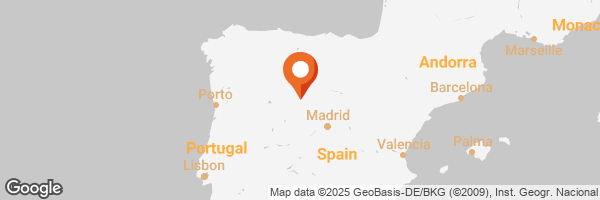



 -
-